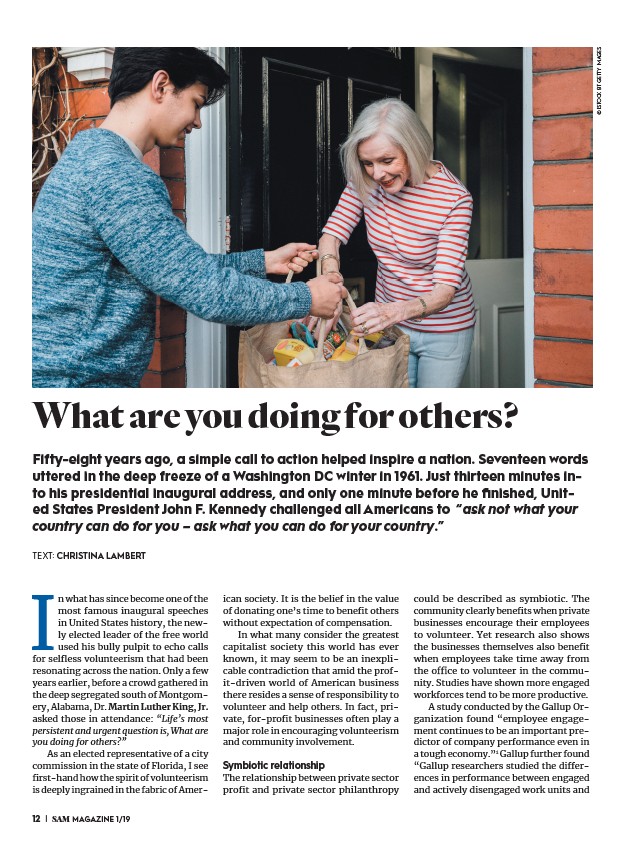
What are you doing for others?
Fifty-eight years ago, a simple call to action helped inspire a nation. Seventeen words
uttered in the deep freeze of a Washington DC winter in 1961. Just thirteen minutes into
his presidential inaugural address, and only one minute before he finished, United
States President John F. Kennedy challenged all Americans to “ask not what your
country can do for you – ask what you can do for your country.”
TEXT: CHRISTINA LAMBERT
In what has since become one of the
most famous inaugural speeches
in United States history, the newly
elected leader of the free world
used his bully pulpit to echo calls
for selfless volunteerism that had been
resonating across the nation. Only a few
years earlier, before a crowd gathered in
the deep segregated south of Montgomery,
Alabama, Dr. Martin Luther King, Jr.
asked those in attendance: “Life’s most
persistent and urgent question is, What are
you doing for others?”
As an elected representative of a city
commission in the state of Florida, I see
first-hand how the spirit of volunteerism
is deeply ingrained in the fabric of Amer-
could be described as symbiotic. The
community clearly benefits when private
businesses encourage their employees
to volunteer. Yet research also shows
the businesses themselves also benefit
when employees take time away from
the office to volunteer in the community.
Studies have shown more engaged
workforces tend to be more productive.
A study conducted by the Gallup Organization
found “employee engagement
continues to be an important predictor
of company performance even in
a tough economy.”1 Gallup further found
“Gallup researchers studied the differences
in performance between engaged
and actively disengaged work units and
ican society. It is the belief in the value
of donating one’s time to benefit others
without expectation of compensation.
In what many consider the greatest
capitalist society this world has ever
known, it may seem to be an inexplicable
contradiction that amid the profit
driven world of American business
there resides a sense of responsibility to
volunteer and help others. In fact, private,
for-profit businesses often play a
major role in encouraging volunteerism
and community involvement.
Symbiotic relationship
The relationship between private sector
profit and private sector philanthropy
© ISTOCK BT GETTY IMAGES
12 | SAM MAGAZINE 1/19